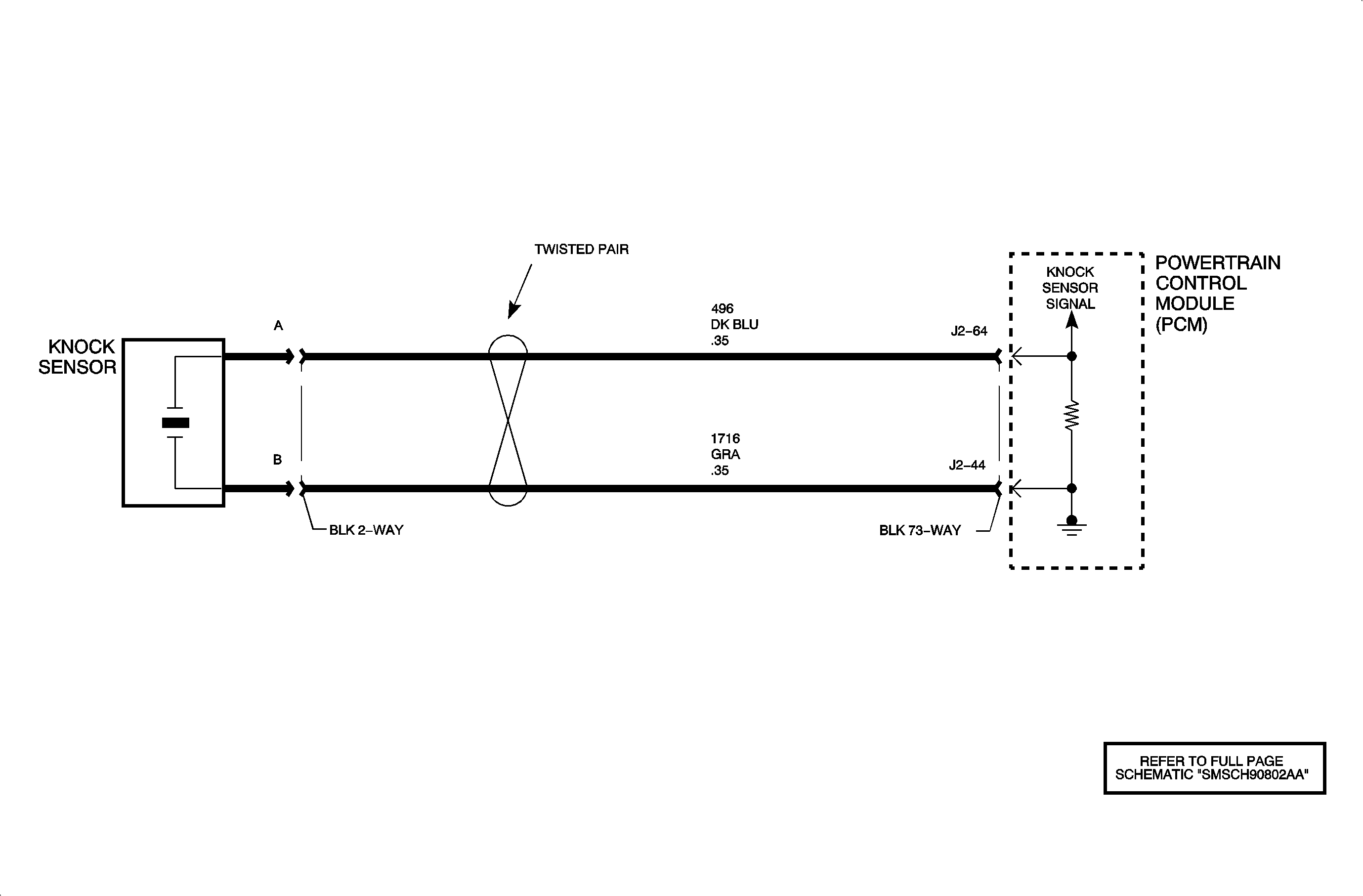
The knock sensor is a piezoelectric device that produces an AC voltage of different amplitude and frequency based on engine mechanical vibration. The amplitude and frequency are dependent on the level of knock the sensor detects. The PCM learns an average noise level from the knock sensor, based on a calibrated average, and monitors the signal to verify that it stays above a minimum value. The knock sensor signal is only used during the top dead center combustion event of the firing cylinder. When in a combustion event, the PCM filters the knock signal and compares it to the normal calibration noise level for that RPM. If the PCM has determined that knock is present during the combustion event, it will retard timing on the next firing cylinders until the knock is eliminated. The PCM will always try to work back to a zero compensation level or no spark retard. DTC P0326 will set when the PCM can not eliminate spark knock by retarding spark timing which is most likely caused by engine noise.
DTC Parameters
DTC P0326 will set if the PCM can not reduce spark knock, as seen by the knock sensor, by retarding timing. The knock sensor activity is probably due to engine noise and not spark knock.
DTC P0326 is run with the engine running and a cylinder in a combustion event window.
DTC P0326 is a type D DTC.
Diagnostic Aids
DTC P0326 indicates excessive engine noise and not excessive spark knock. This code does not indicate a problem in the knock sensor circuit subsystem.
Normal knock sensor values should vary between 0.2-2 volts at idle to wide open throttle shown as KS NOISE on the scan tool. The voltage should increase with RPM.
Knock sensor resistance should be infinite (open).
Check the knock sensor attachment bolt for tightness.
Tighten
Tighten the knock sensor attachment bolt to 25 N·m (19 lb ft).
Possible causes for engine noise:
| • | Valve train |
| • | Belt tensioner |
| • | Bracket loose |
| • | Low octane fuel in high altitude with engine under high load |
